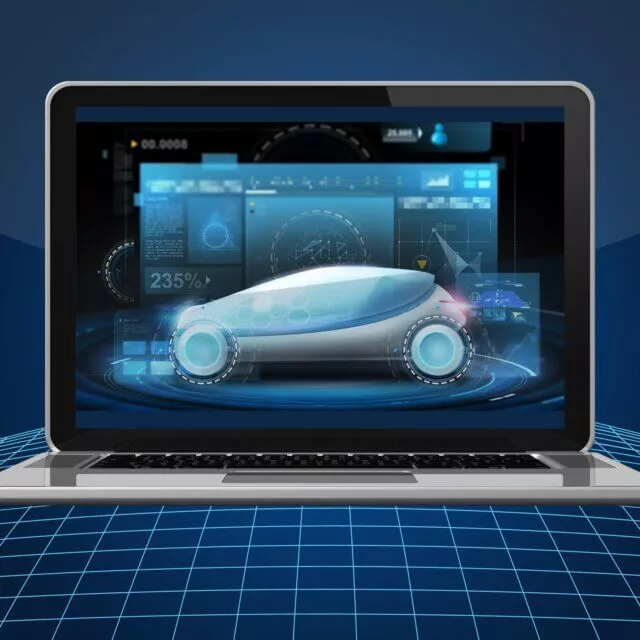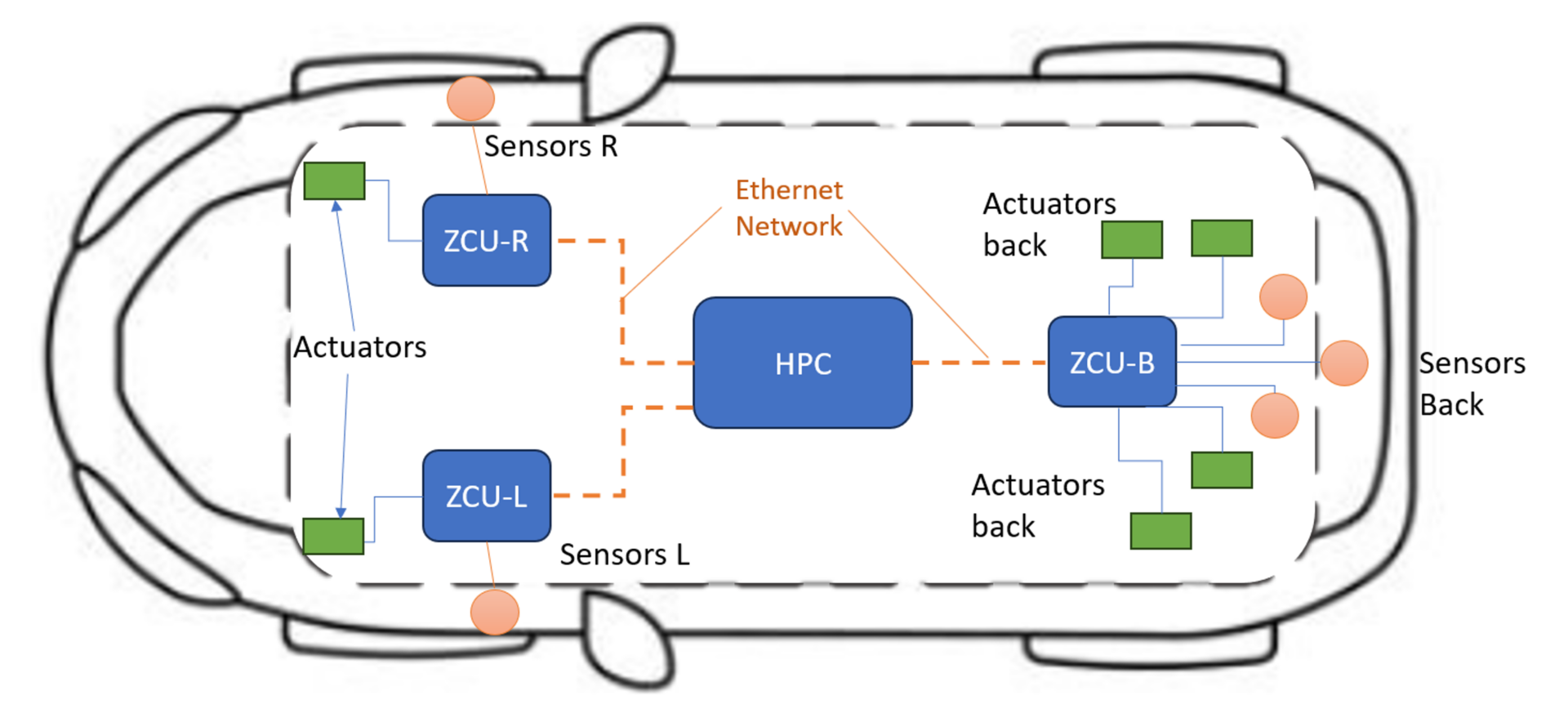When Software Takes the Wheel: The Future of Automotive Architecture

The software revolution in the automotive industry is well underway, with the number of software functions in vehicles constantly increasing. Historically, automotive electrical/electronic (E/E) systems and the corresponding architecture in vehicles were built on decentralized control units (ECUs), where each unit managed specific functions, tightly coupling hardware and software.
However, this landscape is rapidly evolving. The industry is shifting away from decentralized control units towards centralized systems where software takes on a more dominant role. Centralized virtual control units are expected to manage sensors and actuators, significantly reducing the number of microcontrollers in vehicles.
This transformation brings exciting opportunities but also unique challenges, particularly when considering compliance with the ISO 26262 functional safety standard. In this blog, we take a closer look at how this shift is impacting vehicle architecture and the implications for safety-critical systems.
New centralized systems in cars rely on integrated high-performance virtual control units (VCUs), which replace the traditional decentralized ECUs, each managing more or less individual functions. Shared calculation capability of the high-performance computer (HPC) enables the reduction of the large number of control units, making way for so-called zone control units (ZCUs). These ZCUs help simplify the vehicle network complexity in the car, further supporting the centralized architectures and enhancing the separation between software and hardware.
Zone control units bundle the functions in a localized sub-area of the vehicle (e.g. control functions or data management tasks) and are connected to the main control unit, the HPC, via Ethernet to ensure high-speed data transfer.

In previous aka traditional vehicle design, the focus was on so-called signal-oriented architecture, where each function (at the vehicle level) required an individually assigned ECU. In recent years however, this approach led to ‘wild growth’ of the ECUs per function, as cars began to offer more and more features and provide more advanced driver assistance systems (ADAS).
Modern centralized architectures move away from signal-oriented systems, adopting a service-oriented approach instead. The focus now is on the system and software functions, which ultimately shape the entire vehicle architecture, both in terms of software and hardware.

The scope of the architecture in software-defined vehicles comprises:
The new shift is also having an impact on how companies operate. Some OEMs have founded dedicated car software subsidiaries to develop their vehicle operating systems and other vehicle-specific solutions.
Alternatively, it also makes sense to outsource software-specific solutions to external providers, as it enables access to external expertise that drives the development of car operating systems, so to speak. In any case, transforming the entire company into a software-centric organization would be an ultimately difficult task for any OEM, particularly as the company’s own traditional culture would have to become more flexible while achieving set goals would take considerably more time.
Shifting from organizational to technical aspects, there will still be system- or vehicle-level requirements. However, at the component level, the emphasis will increasingly be on software requirements. The required system functions, which in turn are mainly implemented through software, will dictate requirements, architecture, integration, and verification phases.
The centralization of systems and hardware introduces a higher proportion of shared resources. This means that a special focus must be placed on the Dependent Failure Analysis (ISO 26262). In centralized architectures, shared resources such as the HPC or ZCU handle multiple functions. In such cases, it’s important to address common cause failures, where both, the monitoring and monitored functions, are subjected to the same event or cause. The required independence or freedom from interference shall be considered and achieved by the design of the architecture.

Dijaz Maric, Quality Management & Reliability Engineering Consultant
Do you want to learn more about the implementation of ISO 26262, IATF 16949, Cybersecurity or other standard in the Automotive sector? We provide remote support and training to enhance your functional safety related projects. Please contact us at info@lorit-consultancy.com for bespoke consultancy or join one of our upcoming online courses.
Learn moreAs the E/E architecture becomes centralized, it is no longer efficient to build hardware parts with individual software programs bundled. Zone control units reduce vehicle network complexity by supporting centralized architectures and the increasing separation of soft- and hardware. The integration and verification process of the systems is increasingly being shifted to the vehicle level, to the area of responsibility of the integrator.
Looking at this process, it is particularly important to define the hardware-software interface (HSI) specification correctly. The HSI shall outline the hardware and software interaction and be consistent with the technical safety concept. The HSI shall be specified during the system architectural design, considering elements like memory, buses, signal I/O-s, etc., including the characteristics like interrupts, data transfer, memory management etc.
Service applications in the software defined vehicles enable constant connectivity to the cloud and its services. Continuous updates, improvements, and function deployment services support the transformation towards the software-defined vehicle. But, as with any innovation, there is always a ‘but’.
While the idea of frequent software updates — similar to those on our smartphones — sounds appealing, there are few things to consider. Every software change raises the question of its potential impact on functional safety. ISO 26262-8:2018 requests an impact analysis for each change, assessing the affected item or element, its interfaces, and any connected components. This process, while necessary, doesn’t make things any easier, of course. But as the saying goes, safety comes first!
Technological revolutions and advancements are essential and inevitable in every industry. Software-defined architectures are reshaping the automotive landscape, where the demand for advanced functionalities and interconnectivity is constantly growing, turning vehicles into smart cars that are becoming increasingly autonomous.
Of course, new concepts also bring challenges with them. In terms of functional safety, adhering to ISO 26262 while adapting to new vehicle architectures requires careful consideration. This may necessitate rethinking certain concepts or at least the approaches of the ISO 26262 standard to keep pace with the latest automotive trends and ensure safety remains a top priority.
By Dijaz Maric, Quality Management & Reliability Engineering Consultant
If you are looking for functional safety support either through consultancy or training courses, please feel free to contact us via contact form or at info@lorit-consultancy.com.